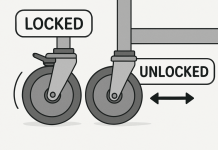
Water leaks are a nuisance. In many cases the first sign there is an issue is when you notice your water bill is creeping up and you don’t know why. Even a small water leak can add a sizeable amount to your bill.
Of course, there are other issues with water leaks, they can damage floors, walls, ceilings, and even cause wet rot in the wooden structures of your home. These problems tend to happen over extended periods of time. However, hidden water leaks can go undetected for a long period.
That’s why, if you discover a hidden water leak, it’s justifiable to call an emergency plumber, you’ll want the issue resolved as quickly as possible.
Here are five things you need to do to locate these hidden water leaks.
1. Verify The Leak
The first step in your journey is to turn off all the appliances in your home and take a water meter reading. Wait for a couple of hours and then take another reading. If it has changed and you haven’t used water in those two hours, you have a leak somewhere.
You can start to narrow down the search area by shutting off valves inside your home and repeating the water meter test. This can help you to isolate the area of plumbing that has the leak. In effect, when the water meter doesn’t change the leak is in the area currently deprived of water.
2. Outside Plumbing
This is one of the most effective ways to find a leak that is hiding in plain sight. Often you won’t notice a dripping garden tap as it hits the soil and effectively vanishes.
Go around your yard and check for any signs of a leak, pay particular attention to any irrigation systems you have.
3. Test Your Toilet
It is surprisingly common for a cistern to leak into a toilet without it being noticed. The best way to verify this is to add a few drops of food coloring to the water in your cistern. A few is enough for it to change the color of the water slightly.
Then wait for 10-30 minutes. If the water in the toilet has changed color or the food coloring is visible then you have a leaking toilet that needs fixing.
4. Interior Visual Inspection
One of the biggest signs that you have a hidden leak is stains and watermarks. Go slowly around your home looking at the floor, walls, and ceiling. Pay particular attention to the areas where you know pipes run behind the walls.
Water stains are obvious and they will also encourage the growth of mold, giving away that you have a damp issue.
5. Use Your Nose
Finally, leaks create damp which creates a distinctive aroma. If you regularly check your home for foul smells you are likely to spot and issue much earlier. This will allow you to call the plumber and get the problem resolved for good.



